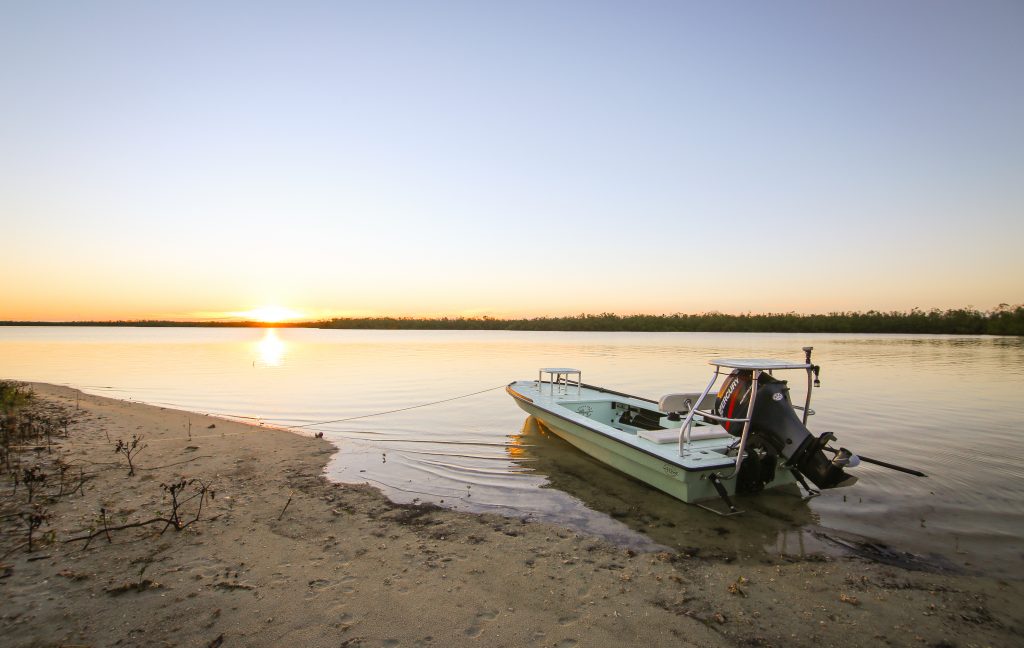July 10, 2018
By Florida Sportsman Editor

I recently found myself in a tight spot, that being on my skiff. I had the perfect two-man setup: a lightweight, simple tiller boat. I could get into the deepest backcountry spots and, predominantly fly fishing, I found the stealth of my little microskiff perfect.
I have family members and friends whom I love taking out on the boat, but require a more stable platform. I also have a newborn daughter. Stepping up to a little bigger boat offered a safer option for her, and some evolving priorities of my own, together, ultimately helped me decide on the boat that is in my garage today.
LAYOUT
When it comes to skiffs, I live by the S.C.E. rule: simple, clean, effective. When working with 16 to 18 feet of boat, every inch counts. Unnecessary things tend to get in the way. Everything on my boat has its purpose. Adding gadgets such as shallow water anchor systems or stereo adds maintenance. These things also add weight, and more weight means more draft. This may not matter to some, but it can be frustrating not being able to get over that last sandbar to the fish.
I opted to go with a flush side console mount for my new boat, as this allowed me to still have a steering wheel for those long runs into the backcountry, but also left easy access under the gunnel and secure maneuvering from bow to stern.
DECIDING FACTORS
One drawback to the two-man skiff I had was storage space. I enjoy camping, and being able to blend both fishing from my skiff and camping on coastal islands such as in the Everglades is important to me. That means, at times, I need to haul a bunch of stuff to the camp site.
The extra capacity to do so was a huge benefit when jumping up in size. A few more inches of beam and length can mean a world of difference. The Coast Guard load rating doubled from boat to boat, when I moved up. Also, most microskiffs don't have a livewell, for good reason: to keep it light. For fly fishermen, a livewell ismostly unnecessary. But what if I did want to live bait a bit? Having the option on the new boat is nice. Typically, I plug the hole and it becomes my cooler for the day.
More fiberglass, more money? Yes, and a bigger boat will require a bigger motor and a bigger trailer. A 16-foot skiff will usually run good with a 50-hp motor. Step up to an 18-foot boat and a 70 to 90hp is standard, and that means more out of your pocket. Depending on brand, layout and accessories, a three-person skiff may run $10,000 or more than the two man.
Dry weight also varies. Two- man skiffs usually come in under 700 pounds for the boat, motor and trailer (crazy, right?). Add room for one more person and you're looking at 1,000 to 1,500 pounds.
Where are you going to store it? If the boss (wife) allows, the garage is optimal. The less time the boat sits in the sun, the less oxidation on your gel coat, less fading on controls and electronics. Both sized boats will usually (remember that word) fit in a two-car garage with a breakaway tongue on the trailer. FS
